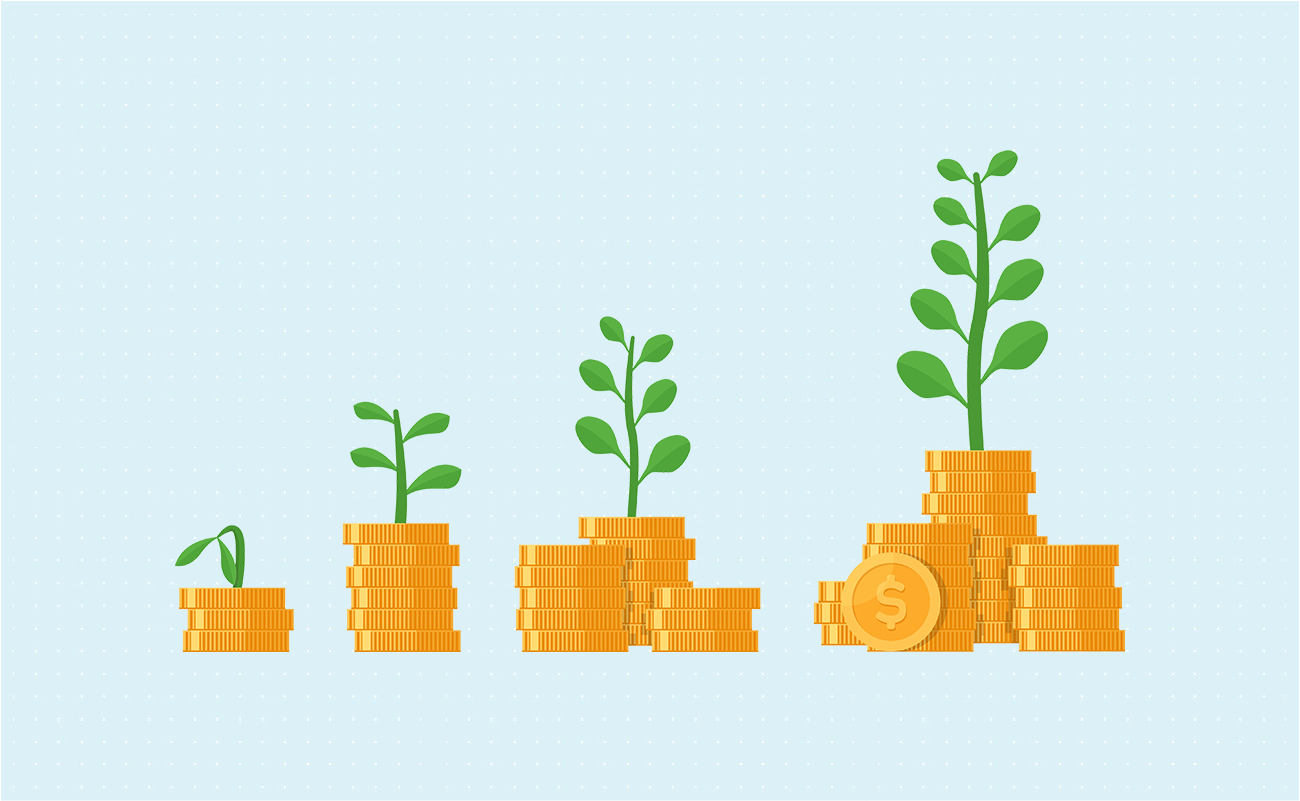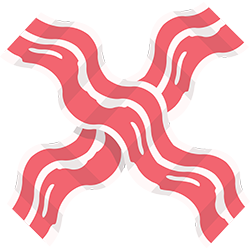Amortization
Biweekly Payments
Interest Only Payments
 Interest Only Loan Calculator
Interest Only Loan CalculatorThis calculator figures the monthly principal and interest payment for a loan along with the associated interest-only payment. If you would like to switch to weekly or biweekly payments then select 52 or 26 in the payments per year setting.
Guide published by Jose Abuyuan on February 18, 2020
When it comes to loans, you'll notice many types of consumer finance follow a traditional payment schedule called amortization. This payment schedule tells you how much of your money goes toward your loan's interest and principal balance. It is also applied from start to finish of your loan. Amortization ensures your balance is reduced to zero by the end of your loan term.
However, did you know there are loans that allow you to make interest payments during the first few years? These are referred to as interest-only loans.
In this article, we'll discuss what interest-only loans are and how they compare with amortizing loans. We'll also talk about its benefits and disadvantages, and whether this payment option can work for you.

Interest-only loans come with an initial payment duration that only requires interest payments for a specified amount of time. Most interest-only loans also have variable rates, which means the interest rate changes as soon as the interest-only period is done. Under this arrangement, borrowers can defer the full loan amount while only paying for the cost of borrowing money during the first few years.
Interest-only loans are ideal for individuals with stable incomes, including:
This type of loan imposes a fixed interest during the initial payment period, which also means lower monthly payments during the early years of the loan.

Take advantage of the low monthly payments. You can make significantly higher payments during the interest-only period of your loan. Paying more greatly reduces your loan's principal, which means less interest accrues over the life of the loan.
Interest-only loans can be found in different consumer finance options such as the following:
Interest-only mortgages are used by consumers with high net worth to maximize their capital use. For people who want to buy and sell a house, the low initial payments allow them to afford short-term homes and place their money on income-generating investments. If your goal is to sell an expensive house before the end of the interest-only period, there's an option to end your contract early by refinancing to a conventional mortgage or selling the house. Doing so allows you to pay a lumpsum balloon payment on the loan, which helps you dodge extra interest costs.
HELOC allows you to borrow money against the equity you've built in your home. Once you pay down a significant percentage of your mortgage, which is typically around 80 percent, you can have access to home renovation funds through HELOC. You are given a ‘draw period' to take credit. During this time, you are only required to pay interest on the credit you use. But take note that most HELOCs have variable interest rates, which means the standard interest rate may increase or go down. Once the draw period is over, your payment schedule shifts to an amortized schedule. This assures the lender that you'll keep paying back the money you owe.
Student loans are actually a type of interest-only loans. Interest accumulates in private student loans and unsubsidized federal loans. While payments are not required when a student is still studying, interest that accumulates during this period capitalizes. This means the interest is added on top of your original loan balance, which makes your student loan accrue more interest. To steer clear of interest capitalization, you can make interest payments to your lender while still in school.
For instance, under an interest-only mortgage, borrowers are required to make payments on the loan's interest within a set period. Once this interest-only period is done, your monthly mortgage payment shifts to become an amortized loan.
How long does the interest payment period last? It generally runs for 5 or 10 years for mortgages. For other types of loans, it can last for 3 years or as long as 20 years. During this payment period, you have the freedom to increase your payments, with the remainder of the amount going toward your principal balance.
After this payment duration, borrowers usually have the entire loan term, which is typically around 10 or 20 years to pay down the principal balance and any accrued interest. However, if you want to pay down your mortgage debt sooner, you can choose to pay your principal in full. Other homebuyers choose this type of loan to gain home equity faster.
Interest-only mortgages are similar to adjustable-rate mortgages (ARM). During the interest payment period, your loan's interest rate is fixed. ARMs also start off with fixed-rate payments. Once this duration ends, your interest rate increases as time goes by.

Every loan has two main components: the principal and the interest. The principal is the amount you owe the lender, while the interest is the money the lender charges to service your loan. With interest-only loans, you only pay for the interest during the first several years of your debt. By the end of this initial payment period, the Consumer Financial Protection Bureau (CFPB) states you have the following options:
On the other hand, traditional mortgages immediately apply amortization on your first payment. A portion of your payment goes toward the interest and the principal balance every month. These payments are arranged periodically with a definite end date, ensuring your debt is reduced to zero. Amortization applies whether you choose a fixed-rate loan or adjustable-rate loan.
Over time, the more payments you make, the payment ratio for interest and principal changes. For example, if you have a 30-year mortgage with a large principal and high interest, the principal payment ratio increases significantly toward the latter years of the loan term, while the interest ratio decreases.
To illustrate how different they are, let's take a look at the difference between a traditional amortizing loan and an interest-only loan. Let's use the mortgage details below with a 10-year interest-only period.
Need to compare an amortizing loan with an interest-only loan? Use our calculator on top of this page.
Mortgage
| Loan Details | Traditional Amortized Loan | Interest-Only Loan |
|---|---|---|
| Interest-only monthly payment | — | $833.33 (first 10 years) |
| Fully Amortized monthly payment | $1,073.64 | $1,320.57 |
| Overall interest cost | $186,511.57 | $300,000 |
| Overall cost of the loan | $386,511.57 | $500,000 |
In the above table, your monthly mortgage payment will cost $1,073.64 with an amortizing loan. That's a fixed amount for 30 years. With an interest-only mortgage, the monthly payment will only cost $833.33 for the first 10 years. But after this period, your monthly payment can increase as high as $1,320.57.
For the overall interest, the amortized loan will cost $186,511.5, while the interest-only loan will cost $300,000. In total, you will spend $386,511.57 for an amortized mortgage versus $500,000 for an interest-only mortgage. That's a difference of $113,488.43 in savings.
This example shows that payments for the first 10 years in the interest-only loan is more affordable. However, borrowers must be prepared for high monthly payments afterwards. If you think you cannot make increased payments in the future, do not choose this type of loan.
If you want to avoid the high interest cost, you can pay down your principal in full once the interest-only period ends. Make sure you have enough funds to cover the large payment.

If you cannot afford higher payments based on your current income, obtain a traditional mortgage instead. Once your payment gets higher, your financial capabilities may change. This puts you at greater risk of default. Your property's value could also depreciate. Refinancing your loan or selling your property may not always be available options once your payments become higher.

How about revolving credit payments versus amortized payments? Revolving credit, such as credit cards, are not issued with a preset amount. It only puts a cap on how much you can borrow. That means the amount you decide to withdraw within the limit is entirely up to you. Many revolving loans are offered as lines of credit. This allows a borrower to charge and pay off the amount as they continue to make charges. But beware. Unsecured revolving credit can take 15 to 20 percent interest. The flexibility to borrow more money often racks up higher interest costs. In a similar manner, adjustable-rate mortgages (ARM) and interest-only loans tend to cost more when interest rates rise.
Meanwhile, amortized loans, also referred to as installment credit, require a definite loan amount and payment time. These factors determine your monthly payment. Common amortized loans are mortgages and car loans. Because the amount is predetermined, the sum you borrowed does not change with time.
If you're starting to incur more debt than you are able to pay, it's time to stop charging from revolving credit. You should seriously stop using your cards if you're racking up multiple debt. When this happens, you can take out an amortizing loan, like a personal loan, and consolidate your debt. Likewise, you should consider shifting an ARM or interest-only loan to an amortized loan if you think you cannot afford the high payments caused by rising interest rates. This move makes sense when interest rates are low, so you can secure a favorable fixed rate.
For revolving credit like HELOC, you are allowed to convert a portion of your balance to a fixed rate with a specified term. This can be done during the draw period, which should help manage your payments.
How will shifting to an amortizing payment help? One, you'll have the benefit of predictable monthly payments that are easier to budget and track. The fixed loan amount also ensures the principal balance does not increase. Second, amortized loans usually have lower interest rates (2 percent for secured loans and up to 18 percent for unsecured loans) than credit cards. This means you can lower the interest rate if you use a personal loan to consolidate your credit card debt.
| Pros | Cons |
|---|---|
| Allows affordable payments for the first several years of the loan. | Interest-only loans generate high interest cost, especially in the long term. |
| You can pay a higher amount during the initial payment period to significantly decrease your principal balance. | “Payment Shock” – Once the initial payment period ends, your monthly amount can get really expensive. |
| For mortgages up to $750,000, the entire amount of the monthly payment is tax-deductible during the initial payment period. | For mortgages, your home may not appreciate as quickly as you would like. |
| It allows high-income borrowers to maximize short-term capital and increase their net worth. | Your income may not increase as you expect it. If you cannot afford the higher payment, it puts you at greater risk of default. |
Interest-only loan options allow consumers to reduce the initial costs of borrowing money. With traditional amortized loans, you make payments that cover both the interest and principal. But with interest-only loans, your payments can work in two ways:
Borrowers can make the most out of lower monthly payments to pay down their debt. This helps them rebuild savings after covering the down payment and closing costs. And under mortgage interest tax deductions, it is possible to write off your entire loan payments during the interest-only payment period.
With interest-only loans, it's more advantageous to pay your principal down once the initial payment period ends. This saves you thousands of dollars in interest cost and helps you acquire home equity faster. On the other hand, the higher interest rate and monthly payments can put you in further debt and eat away your savings.
Without the added expenses, you have money to set aside for other important things, such as capital for a new business venture, your child's college tuition, and even your retirement. Moreover, getting your debt paid sooner lowers your debt-to-income ratio. This improves your credit score, which helps you qualify for future loans.
Once the interest-only period ends, your monthly payment increases considerably. This is because the adjustable interest rate at the latter part of the loan is usually higher than its fixed-rate counterpart. Consequently, if the new amount is too high, you have greater risk of defaulting on your loan.
What does this tell us? While pushing back repayment keeps monthly payments affordable, it actually costs a lot more than amortized loans. Thus, it is not a practical option if you need to make sure you can afford long-term loan payments. This type of loan is more suited for borrowers with high-income and a steady stream of funds.

Knowing the benefits and disadvantages of interest-only loans can help you decide whether it's a good payment option aligned with your goals. It helps you defer full payments for several years until you can afford to make the full monthly payments.
Moreover, if you want to gain home equity much faster, it allows you to pay down the principal after the initial payment period ends. For others looking to buy and sell property within a short period of time, interest-only loans can also work for you.
Finally, one of its great benefits is the opportunity to write off your entire mortgage payments during the interest-only period. You can make really large payments that can help reduce your principal. Just beware of the high interest rates once the initial pay period is over. Make sure you have enough money to afford your loan.
Need to know how bi-weekly loan payments can work for you? Use our calculator and read our guide.
Jose Abuyuan is a web content writer, fictionist, and digital artist hailing from Las Piñas City. He is a graduate of Communication and Media Studies at San Beda College Alabang, who took his internship in the weekly news magazine the Philippines Graphic. He has authored works professionally for over a decade.